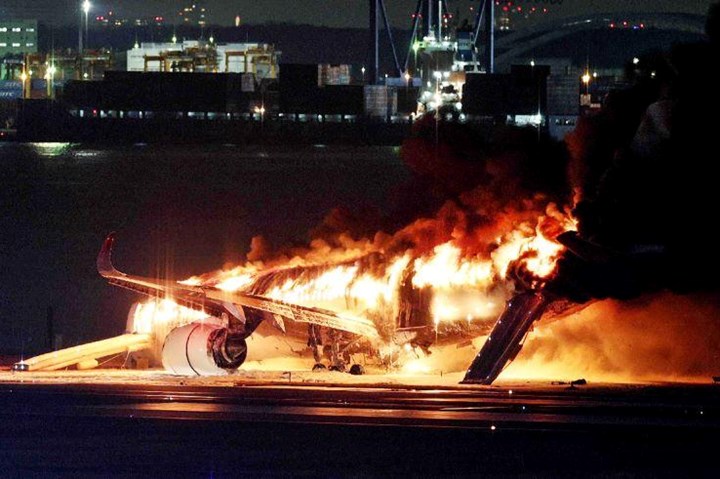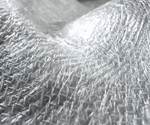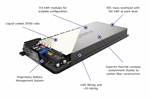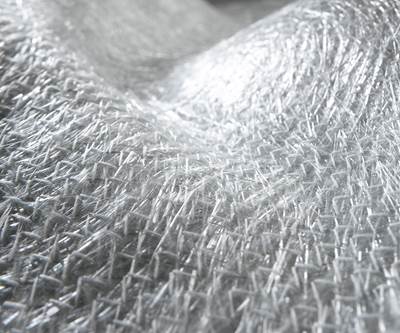First Airbus A350 crash confirmed in Haneda
Shortly after touch-down, a JAL A350-900 aircraft recently collided with a De Havilland Canada Dash 8. Exact circumstances are still unknown.

JAL Airbus A350-900 at Tokyo Haneda. Photo Credit: Aviation Week
On Jan. 2, it was confirmed that an Airbus (Toulouse, France) A350-900 operated by Japan Airlines, and a Japanese Coast Guard De Havilland Canada Dash 8, were involved in an accident during flight JAL516 from Sapporo New Chitose Airport to Haneda International Airport.
The A350 collided with a DHC-8 aircraft shortly after its touch-down in Haneda. All 367 passengers and 12 crew members on-board evacuated the aircraft, but Japanese authorities have since confirmed that five of the six people on board the DHC-8 did not survive. The exact circumstances of the event are still unknown, and marks the first ever A350 hull-loss and Japan Airlines’ first accident since 1985.
The aircraft involved in the accident, registered under the number JA13XJ, was MSN 538, delivered to Japan Airlines from the production line on Nov. 10, 2021. It was powered by Rolls-Royce Trent XWB engines.
In line with International Civil Aviation Organization (ICAO) Annex 13 recommendations, Airbus says it will provide technical assistance to the Bureau d’Enquêtes et d’Analyses (BEA) of France and to the Japan Transport Safety Board (JTSB) in charge of the investigation. For this purpose, Airbus is presently dispatching a team of specialists to assist authorities.
on the matter, the aircraft “was crossing the runway threshold at a normal approach speed of 122 knots and touched the ground shortly thereafter. Airport video footage shows how the aircraft was traveling down the initial part of the runway, when suddenly it appeared to hit an obstacle with large flames erupting,” collapsing the nose gear.
A JAL statement notes that no issues or irregularities were encountered, from takeoff to when the A350 pilots acknowledged and repeated the landing permission from air traffic control. Airbus says that updates will be provided as soon as consolidated information is available.
Related Content
Otto Aviation launches Phantom 3500 business jet with all-composite airframe from Leonardo
Promising 60% less fuel burn and 90% less emissions using SAF, the super-laminar flow design with windowless fuselage will be built using RTM in Florida facility with certification slated for 2030.
Read More“Structured air” TPS safeguards composite structures
Powered by an 85% air/15% pure polyimide aerogel, Blueshift’s novel material system protects structures during transient thermal events from -200°C to beyond 2400°C for rockets, battery boxes and more.
Read MoreThe potential for thermoplastic composite nacelles
Collins Aerospace draws on global team, decades of experience to demonstrate large, curved AFP and welded structures for the next generation of aircraft.
Read MoreCombining multifunctional thermoplastic composites, additive manufacturing for next-gen airframe structures
The DOMMINIO project combines AFP with 3D printed gyroid cores, embedded SHM sensors and smart materials for induction-driven disassembly of parts at end of life.
Read MoreRead Next
Withstanding fire without the weight
New composites meet stringent fire requirements while lightweighting ships, rail cars and battery boxes for electric cars and planes.
Read MoreDeveloping fire-resistant resins for composites
Ashland, Polynt-Reichhold and Scott Bader discuss chemistries, applications and future developments for FR composites.
Read MoreTroubleshooting thermal design of composite battery enclosures
Materials, electrical insulation and certification are all important factors to consider when optimizing electric battery performance against potential thermal runaway.
Read More












